Tags
SEO for Startups Posted 10.17.2016

Startup companies have so much on their plates from design to development, testing to financing, staffing to outreach—and this is all just a portion of their issues. No matter when industry they are in, being a startup is not an easy thing as the few people running them are bound to do all of the work very early on in the business's life cycle. When an entrepreneur is an expert in their field and know a lot about how to conduct a business in their area, they are probably not worried about perfecting their SEO. Even so, it is not mandatory to dedicate a team of people to optimize or market a website. When you are keen to put in good SEO practices in early on in a website's creation, it will pay off over time as the business gets larger.
Read moreSEO vs. PPC: Which One Should You Choose? Posted 01.30.2017
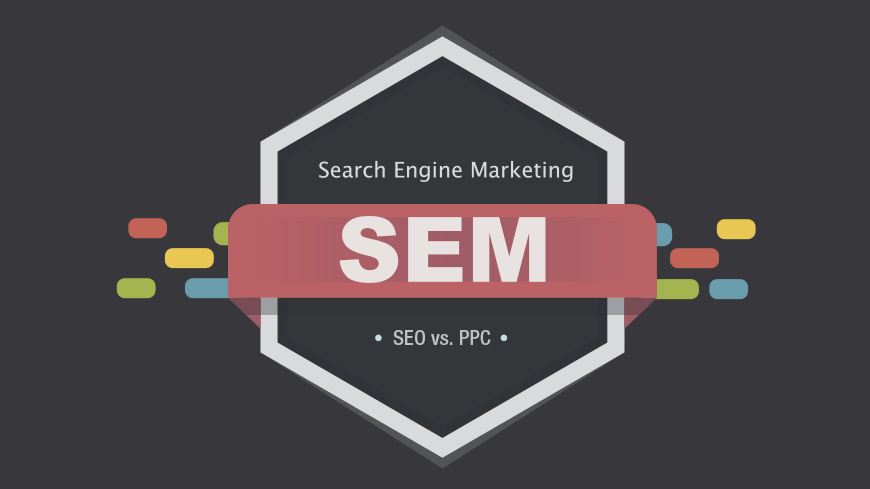
Do you have a new business and are not sure about how to begin promoting it? Are you thinking about expanding the company's current marketing efforts to digital? If the answer to these questions is yes, you probably find yourself in the frustrating situation of questions leading to more questions, with the original questions still needing answers. What are SEO and PPC? Which one should I use? What should I expect? Are they the same thing?
Read moreSharePoint Site Mapping Tool Posted 05.06.2021

A common question that we get here at Dyno Mapper is, "How do you create a sitemap for a Sharepoint site?" Dyno Mapper's crawler and site mapping tool can create site maps for most SharePoint websites and private Sharepoint sites with a login URL published that can be accessed from any browser.
Read moreShould You Use Nofollow Links For SEO Posted 09.23.2023

A Nofollow link is an HTML attribute that tells search engines not to follow the link to its destination. This means that search engines will not consider the linked page a factor in their rankings. An example of a Nofollow link is when a blog author links to a sponsored post on their site but wants to clarify to search engines that they are not endorsing the product. By adding the Nofollow attribute to the link, the search engine will not give the linked site any SEO credit for the link.
Read moreSignificance of Multiple Sitemaps Posted 05.14.2015

We have close to one billion websites on the World Wide Web. This is a huge number, bearing in mind that each of these struggles to take up the topmost positions in the search engines. There are two major sitemap types recommended for any website; the HTML and XML sitemaps. Having the two installed on the site serves various purposes; especially ensuring that your content is discovered in time and indexed and users don’t have hard time finding information on your site especially if you are operating a content-rich website.
Read more
DYNO Mapper is the first and only Sitemap Generator to include Google Analytics integration
DYNO Mapper includes the ability to integrate your website’s Google Analytics data. It is easy to integrate by just following a two step process of 1) connecting your Google Analytics account and 2) choosing the desired sitemap that matches your data. The process takes only a few seconds to setup. DYNO Mapper will sync and display the data for each page on your sitemap and also include global site data. You can select data from Today, Yesterday, Last 7 Days, Last 30 Days, This Month, Last Month, and Custom Ranges. DYNO Mapper also gives you the ability compare two different date ranges.
DYNO Mapper can filter the pages on your sitemap using Google Analytics metrics. Using this feature helps users quickly identify and display pages of high priority and ones that are of zero importance to the average visitor to a particular website. The Google Analytics filter capability can also be shared with each sitemap allowing end users to also take full advantage of this powerful feature.
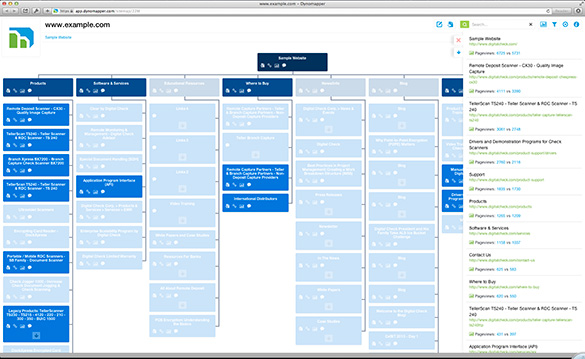 Filter by Analytics: Metrics
Filter by Analytics: Metrics
- Pageviews
- Unique Pageviews
- Avg. Time on Page
- Entrances
- Bounce Rate
- % Exit
Filter by Analytics: Operators
- top
- bottom
- greater than
- less than
- greater than or equal
- less than or equal
- equal
- between
Filter by Analytics: Value
- Choose any value
Using the Filter by Analytics allows users to combine metrics, operators, and values to see the results highlighted on the display of each sitemap. The example shows a filter of Pageviews Top 80%. This will display which pages on your sitemap that are receiving the top 80% of Pageviews within a specified date range. This lets users quickly read, analyze, and draw conclusions from the provided analytics data. After a user filters, the results are also display in list form on the right side flyout list that includes the page title, url, metric, and value. Clicking any of the result pages in the results list will take users to that page.
Read moreSitemap Mapping: The Ultimate Guide to Sitemaps Posted 09.17.2018
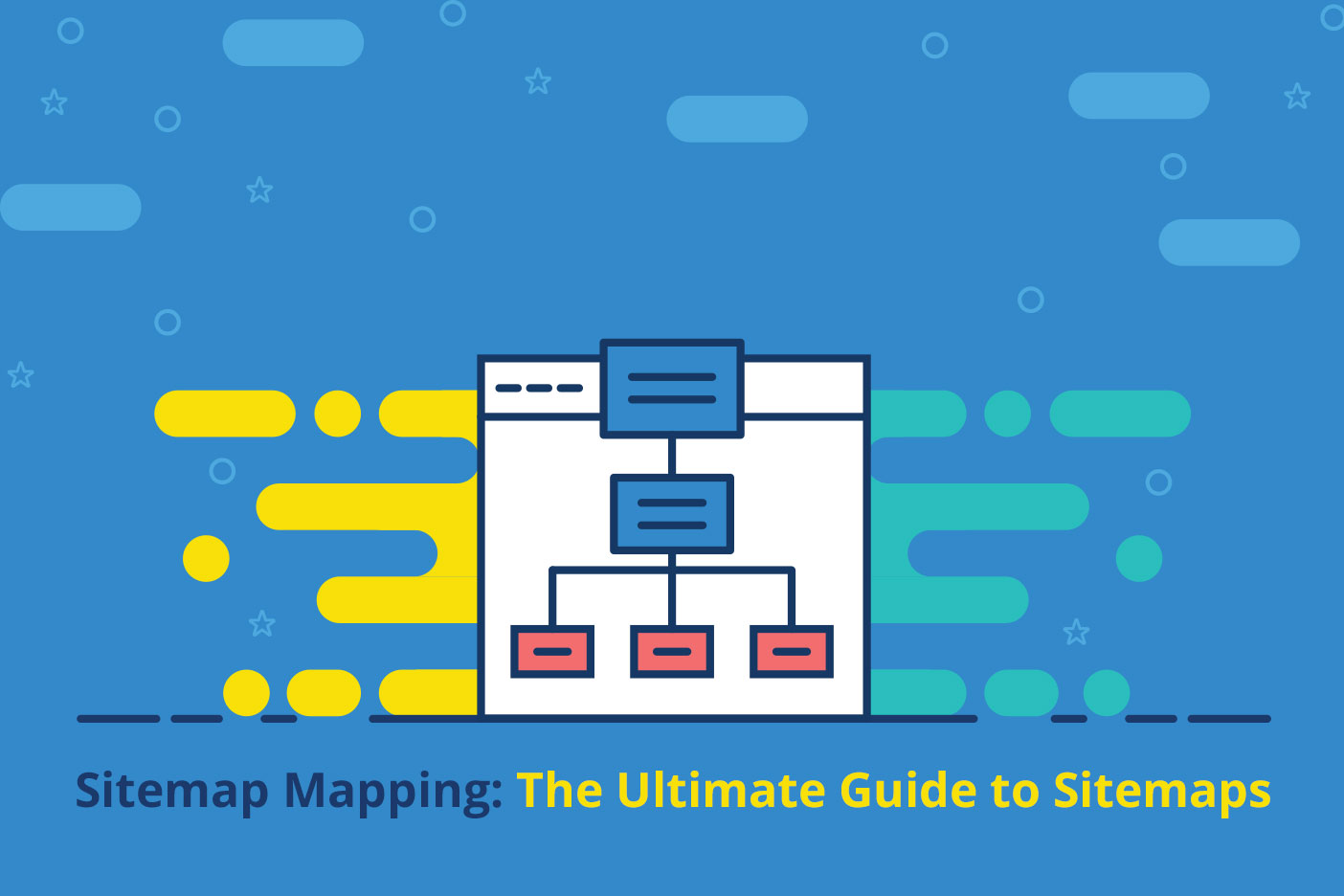
What is a Sitemap? | What Types of Sitemaps Are There? | Why do you need a Sitemap? | Who Uses Sitemaps? | How to Create a Sitemap? | How to Submit Sitemaps to Search Engines?
Imagine that you are a content creator. Every week you produce dozens of videos or art pieces which you then post on various websites. At this, your ultimate goal is to bring home traffic to your website to make money by selling merchandise, showing ads, or serving visitors who support you directly. You want your website to be neat, organized, and easy to navigate. Site mapping can help you with that.
Read moreSitemaps for Search Engine Optimization Posted 04.14.2015

Approximately half of the world’s one billion websites don’t have sitemaps. If you are among the 50% yet to create a sitemap, then know that you are losing out on an important SEO strategy that can see you sail through the search engines rankings with no difficulty. Thousands of websites are launched every day and millions of web pages created. When they crawl sites, search engine spiders land anywhere on the site, and then move from one page to another with the aid of HTML codes.
Read moreSitemaps for SEO Posted 03.30.2015
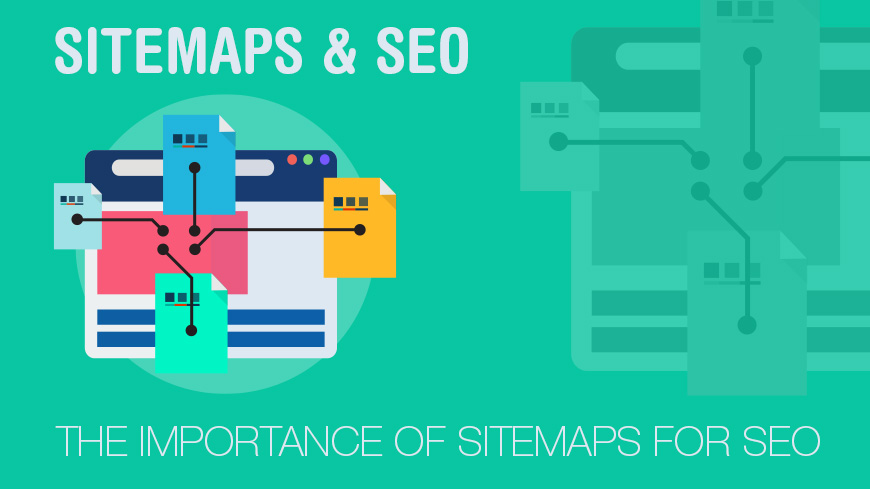
A Sitemap’s purpose is spelling out a website’s main content and to provide search engines with the content they should present to visitors who search keyword phrases. Back in the early days of websites and search engines, SEO firms made huge profits by submitting websites they supported to thousands of search engines that were in existence. Today’s SEO is much different; we seek to take full advantage of any opportunities to provide our content in all of the appropriate types of media available. Here are some tips for an effective and useful sitemap and how to implement it into your website.
What distinguishes an ok sitemap from a great one?
A great sitemap does the following:
- Show a fast, easy to understand overview of the website.
- Provide pathways for SE algorithms to follow.
- Provide text links to every sub-page of the website site.
- Show visitors where the information they desire is located.
- Improves how your website is indexed by search engines.
Read more
Sitemaps: How to Manage, Monitor, and Maintain Your Sitemaps Posted 09.09.2016
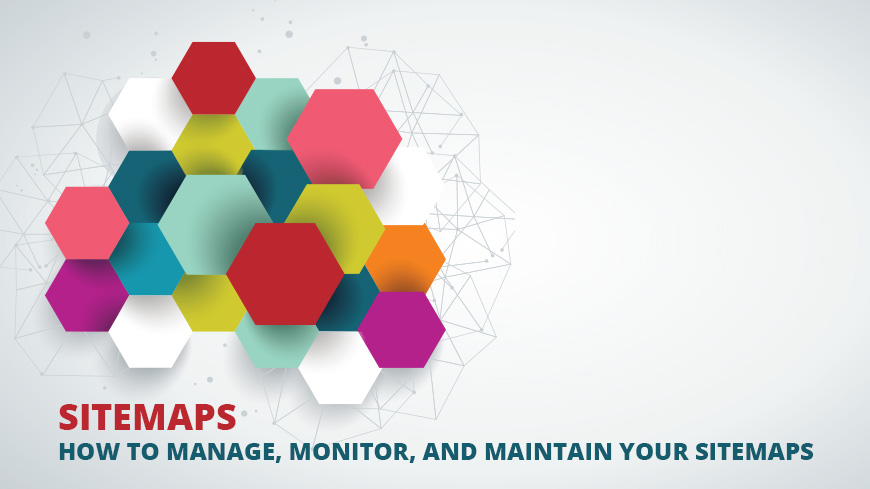
A sitemap is a file that contains a list of the web pages that are on a website. It will relay to Google and other search engines the organization of the website's content. Googlebot and other search engine crawlers will read the sitemap so that they can crawl your site with more knowledge. These sitemaps can also hold important metadata regarding the pages that are listed within the sitemap. Metadata is any information about a web page—like how often it is changed, its importance in relation to the other pages on the site, when it was last updated, and more. Sitemaps can be used to give Google metadata that is associated with particular types of content on the web pages like videos, images, and mobile content. A video entry on a sitemap can indicate the video's running time, age rating, and category. An image entry on a sitemap may tell the type, subject matter, and license.
Read moreSocial Media & SEO: Why Your SEO Strategy Needs To Include Social Posted 09.18.2017

Search Engine Optimization (SEO) has always been an escalating arms race. Companies and advertisers continue to look for new ways to organically push their desired results to the top of search engines. Likewise, search engines constantly update their algorithms to combat keyword stuffing and ensure the true cream rises to the top. This constant push and pull has given rise to a new focus in the field. While good, old-fashioned, keyword focused, SEO is still a necessary part of any successful campaign, a growing number of new-age marketers are turning to social media for an added boost.
Read moreSome Useful Sitemap Generation Tips Posted 04.27.2015

Getting ‘organic’ traffic to your website is a very challenging task; which is good and bad at the same time. It is good because it ensures that only the best websites feature on the top of SERPs, ensuring web surfers get access to quality and fresh information. On the other hand, website owners don’t like it because they have to compete with close to a billion other sites with their eyes focused on the medal; high rankings in the search engines. Competition is actually good, because it gives everyone a chance to outsmart the other, including websites. You can really make large strides by simply using a website mapping tool to create sitemaps.
Read moreThe Best Content Management System (CMS) for SEO Posted 10.04.2017
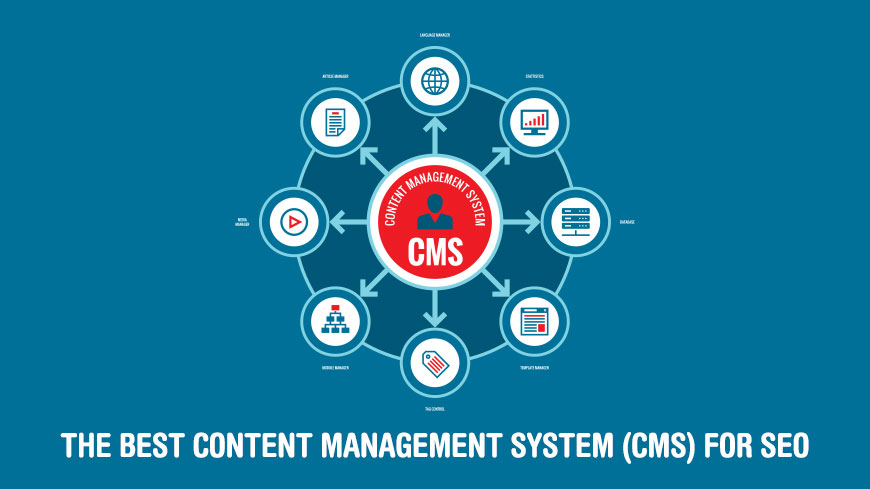
Almost everyone has an online presence today, and getting your business or blog noticed means it has to be attractive and accessible. Making the right choice when looking at a content management system (CMS) to build your site can be the difference between ending up on the search engine’s first results page or its last—and most people don’t even bother with the second page.
Read moreThe Competitive Content Audit Posted 06.18.2015

It is the desire of every webmaster to own a website that can meet their needs, serve and engage his/her visitors. Every webmaster has to develop a positive stance towards competition which many people dread. Competition should be given the right perspective and proper interpretation as you should learn from it in order to improve on personal services and products. Content auditing is aimed at auditing your website as a defense against competitors. It helps you to examine the effectiveness of your contents as well as bridging any technical flaws and gaps.
Read moreThe Definitive Guide to Card Sorting Posted 09.22.2017

If you’ve ever visited a site that was disorganized or you couldn’t find what you were looking for (even though you know the information is there), you’ll understand how frustrating a bad layout can be. You may even have decided to stop using that site and changed over to a different company with similar services as a result.
If this has happened to you, you understand the importance of categorizing your own site’s content in a manner that makes navigating to the desired pages an easy matter—because you don’t want to lose clients, of course!
But how do you know whether your site’s layout and categorization is as easy for your users to understand as it is for you? After all, you built the site (or at the very least gave your developer/website manager directions in doing so), and therefore know where to find everything, but your target market may have a slightly different way of thinking. And if your users struggle to find your content the way you’ve grouped it, they too may consider moving on to a competitor. This is where card sorting (and card sorting software or sessions) saves the day.
Read moreThe History of SEO and Search Engines Posted 05.02.2018
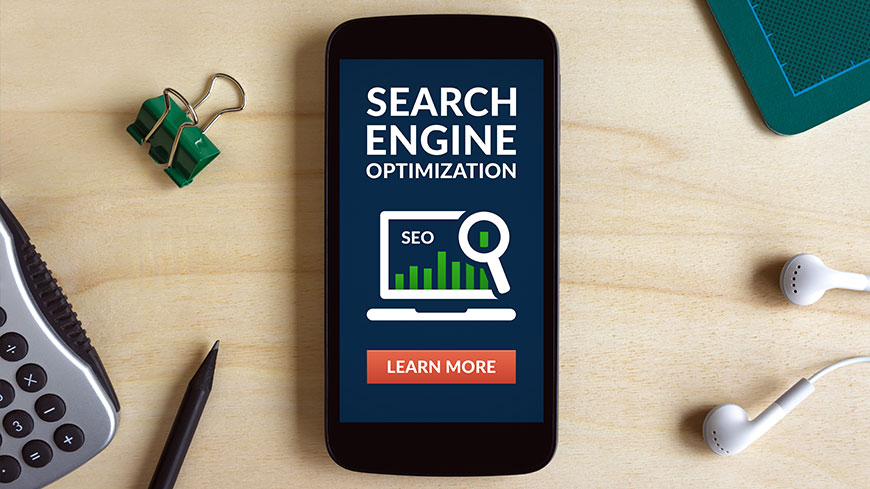
Search engines are used by millions of people every day to find out information about almost any topic you can think of. It is almost hard to imagine a time before you were able to ask the internet a question and find the answer in just a few seconds.
Search engines today are much more advanced than they used to be – even just 30 years ago when they first came about. Using this internet feature is so easy these days. It is even possible to use your voice to find what you are looking for instead of typing in keywords or phrases. Previously, internet search engines were not this simple. In fact, you had to know precisely what you were looking for to find it successfully when they were first being used. Here is a brief history of internet search engines, beginning with the creation of the internet.
Read moreThe Importance of Sitemaps Posted 04.24.2016

To some, sitemaps might seem like a needless chore, and others, a sitemap is pretty much an essential for any website. The latter of the two would be correct. Having a sitemap that is constructed with a clear goal in mind could be the driving factor to a website's success. It will provide a vital link between a website and search engine that nurtures the relationship that is vital to the website's prosperity. A well-structured sitemap will make a website searchable by all search engines, and will provide users with more accurate search results when they are looking for keywords or key terms that are associated with a website. These website site crawlers used by search engines depend on sitemaps to point them in the direction of the correct website that a user is searching for.
Read moreThe Ins and Outs of SEO Posted 10.20.2015

SEO, or search engine optimization, is the process of changing the visibility of a website or webpage within the unpaid portion of a search engine results page. This unpaid portion is sometimes referred to “organic”, “natural”, or “earned”. More often than not, the higher ranked on this search results page and the more frequently that the site occurs on the search results page, the more visitors that it will get from the users of the search engine. These visitors likely then become converted into customers. Search engine optimization can target several different searches like video search, image search, news search, academic search, and searches that are industry-specific. SEO is different from local search engine optimization, simply because local search engine optimization is focused on enhancing the online presence of a business so that search engines will display the pages when a user has entered a local search for the product or service.
Traditional SEO stays more focused on national searches. When used as a marketing strategy on the internet, SEO is based on how search engines work, what individuals are searching for, and the search terms or keywords that are being typed into search engines, along with which search engines are being used by the target audience. SEO can include things liked: editing content, HTML, and code to increase its relevancy to particular keywords and to remove barriers so that the site can be properly indexed by search engines. SEO can be something like increasing the number of backlinks or inbound links of a website. As time goes on, SEO strategies are changing, as now more searches are being performed on mobile devices than on desktops, so SEO for mobile websites is getting off of the ground. All of the major search engines (Google, Bing, Yahoo) have their primary search results, so it is vital that a website be optimized to show up for any of these that show results based on what is relevant to the user's search query. All of these search engines crawl, index, and retrieve content in order to deliver what is most relevant.
Read moreThe Revolution of Search Engines Crawling and Content Indexing Posted 05.19.2015

Technology is making life easier, better and enjoyable. Owning a website is nolonger a reserve of the few with technological know-how. In fact, anyone who can use a MS word can now own and even manage a website without any support from the tech-savvy fellows. This is the good news, but here is the bad. Because everyone can create and own a site, there are currently far too many websites in the world; in fact, a billion to be precise as at October 2014. Most of these websites are very active, and fall under common niches. Large numbers are synonymous with competition, and in this case, all sites are competing for search engines’ attention. If you have the content online, it has to be found by the search engines so that it can be availed to web users.
Read moreThree Reasons Why Sitemaps Are a Must-Have Posted 05.09.2015

If you are still unconvinced on why you need to create and submit sitemaps to Google and other major search engines, you just need to realize that you are losing out on a great opportunity to maximize your site’s potential. Initially, most webmasters and website owners cited the complexity involved in creating sitemaps, but that shouldn’t be a reason anymore. Today, you can make good use of any of available assortment of sitemap makers to have your sitemap neatly generated, fast and reliably. Also, you don’t have to pay a penny submit your sitemap to Google, Yahoo, and Bing because it is free.
Read moreCreate Visual Sitemaps
Create, edit, customize, and share visual sitemaps integrated with Google Analytics for easy discovery, planning, and collaboration.
Popular Tags
Search Engine Optimization SEO Accessibility Testing Create Sitemaps Sitemaps UX User Experience Sitemap Generator Content Audit Visual Sitemap GeneratorGet Started with DYNO Mapper
Join thousands of professionals using the most advanced visual sitemap tool to simplify discovery, IA, and content planning.
👉 Start Your Free Trial — No credit card required.
